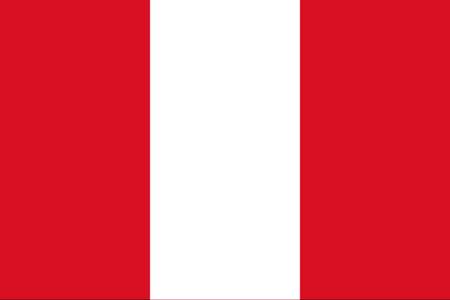The vertical triband of red, white, and red is a classic and striking flag design, adopted by two sovereign nations: Peru and Canada. While they share a color palette, their unique designs and symbols tell very different stories of history, nature, and national identity.
Symbolism of the Colors: In both flags, the red is often said to represent the blood and sacrifice of those who fought for the nation's freedom and values. The central white band typically symbolizes peace, purity, and hope. This powerful combination creates a visually balanced and deeply meaningful emblem.
This article was written by EB React on 18/09/2024
The 2 Vertical Red-White-Red Flags
Peru
The flag of Peru, officially adopted in 1825, features three equal vertical bands. The outer bands are red, and the central band is white. Legend says the colors were chosen by General José de San Martín, who was inspired by a flock of flamingos. Historically, the red represents the blood shed for independence, and the white signifies peace and justice.
Canada
The flag of Canada, known as the "Maple Leaf," was adopted in 1965. It features a unique design called a Canadian Pale, where the central white band is half the flag's width. The red bands represent Canada from coast to coast ("from sea to sea"). The iconic 11-pointed red maple leaf in the center is the nation's most recognizable symbol, representing nature, unity, and pride.



